Key Precautionary Measures for Cyber Safety: A Detailed Guide
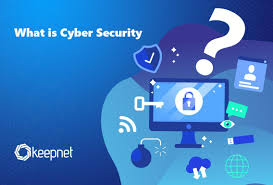
In today’s interconnected world, where technology permeates every aspect of our lives, safeguarding our digital presence is more crucial than ever. Cyber threats are constantly evolving, and proactive measures are essential to protect our personal information, financial assets, and online identities. This guide outlines key precautionary measures that individuals can readily implement to enhance their cyber safety.
Antivirus Protection: Your First Line of Defense

Antivirus software acts as a crucial barrier against malicious software, or malware, that can compromise your devices and data.
Install good antivirus software on all devices: Choose a reputable antivirus program and install it on all your computers, smartphones, and tablets. Ensure it’s always running in the background, providing real-time protection.
Scan USB drives before opening them: USB drives can be a significant source of malware. Always scan them with your antivirus software before opening any files they contain. This prevents the automatic execution of malicious code.
Utilize both paid and free versions of reliable antivirus programs: Consider a paid version for advanced features such as firewall protection, web filtering, and ransomware protection. However, even free versions from reputable vendors offer a significant level of protection against common threats. Research and compare different options to find the best fit for your needs and budget.
Password Management: Building a Strong Foundation

Strong and unique passwords are the cornerstone of online security. Create unique, complex passwords for different accounts: Avoid reusing passwords across multiple websites or applications. If one account is compromised, all accounts with the same password become vulnerable. Avoid using the same simple password across platforms. Hackers can easily guess Simple passwords like “password123” or your pet’s name. Choose passwords that are difficult to crack.
Incorporate special characters and acronyms to make passwords unpredictable: Mix uppercase and lowercase letters, numbers, and special characters (e.g., !, @, #, $, %) to increase password complexity. Use a passphrase or acronym that is meaningful to you but hard for others to guess. Consider using a password manager to securely store and generate strong, unique passwords.
App and Software Updates: Closing Security Gaps

Software updates are not just about adding new features; they are vital for patching security vulnerabilities. Regularly update payment and other apps: Apps often contain security flaws that hackers can exploit. Updating your apps ensures that these vulnerabilities are addressed, protecting your data.
Don’t ignore software update notifications: Software developers constantly release updates to fix security vulnerabilities. Pay attention to update notifications and install them promptly. Enable automatic updates whenever possible. Updates help fix security vulnerabilities: Updates often include patches for newly discovered security vulnerabilities, protecting your system from attacks.
Link and Email Safety: Recognizing and Avoiding Phishing

Phishing attacks are a standard method used by cybercriminals to steal your personal information. Never open links or download files from unknown sources: Be extremely cautious when clicking on links or downloading files from emails or websites you don’t recognize. These could contain malware or direct you to phishing sites. Hover over links before clicking to see the actual URL.
Be wary of spam emails claiming lottery wins or gifts: Such emails are often scams designed to trick you into providing personal information or downloading malicious attachments. Delete them immediately.
Avoid clicking on suspicious email attachments: Email attachments can contain malware. Exercise extreme caution before opening any attachments, especially from unknown senders or if the email content seems suspicious.
Software Download Practices: Ensuring Authenticity
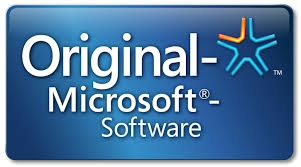
Downloading software from unofficial sources can expose your system to malware.
Download apps and software only from official sources: Official sources, like app stores and developer websites, typically have security measures in place to protect against malware.
Use Google Play Store, Apple Store, or official websites: These platforms have a review process for apps, reducing the risk of downloading malicious software.
Avoid downloading from unverified third-party sites. These sites may distribute infected software or software bundled with unwanted programs.
Third-Party Computer Usage: Protecting Your Privacy
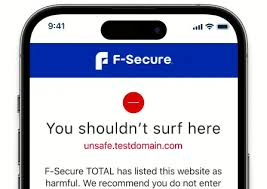
Using public or shared computers requires extra caution to prevent unauthorized access to your accounts.
4. Use the browser’s incognito mode on shared computers: Incognito mode prevents the browser from saving your browsing history, cookies, and login credentials.
Avoid storing login credentials: Never save your usernames and passwords on a shared computer.

Use on-screen/virtual keyboards to prevent keylogger tracking: Keyloggers are malicious programs that record your keystrokes. Using an on-screen keyboard can help prevent them from capturing your passwords.
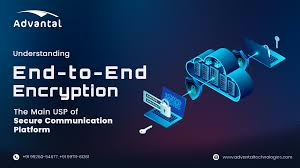
Comprehensive Cybersecurity Methods and Strategies
Introduction to Cybersecurity
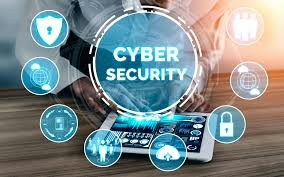
Cybersecurity is a multi-layered approach to protecting digital systems, networks, and data from malicious attacks, unauthorized access, and potential breaches. It encompasses a wide range of techniques, technologies, and practices designed to safeguard digital assets and maintain the integrity, confidentiality, and availability of information.
Key Cybersecurity Methodologies
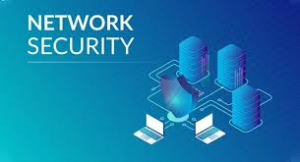
1. Defense-in-Depth Strategy
A comprehensive security approach that uses multiple layers of security controls:
- Physical security
- Network security
- Application security
- Data security
- User awareness
Principles:
- No single point of failure
- Multiple defensive mechanisms
- Redundant security controls
- Continuous monitoring and adaptation
2. Authentication Methods
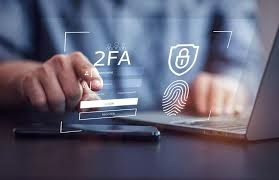
a) Multi-Factor Authentication (MFA)
- Combines multiple verification methods:
- Something you know (password)
- Something you have (security token)
- Something you are (biometric data)
b) Advanced Authentication Techniques
- Biometric Authentication
- Fingerprint scanning
- Facial recognition
- Retina/iris scanning
- Token-based Authentication
- Hardware tokens
- Software tokens
- Time-based One-Time Passwords (TOTP)

3. Encryption Techniques
Symmetric Encryption
- Single key for encryption and decryption
- Faster processing
- Best for large data volumes
- Examples: AES, DES

Asymmetric Encryption
- Public and private key pair
- More secure for key exchange
- Slower but more complex
- Examples: RSA, ECC
Modern Encryption Strategies
- End-to-end encryption
- Full-disk encryption
- Network-level encryption
- Transport Layer Security (TLS)
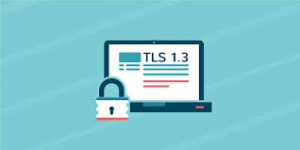
4. Network Security Methods
Firewall Technologies
- Packet filtering
- Stateful inspection
- Application-level gateways
- Next-generation firewalls

Intrusion Detection/Prevention Systems (IDS/IPS)

- Real-time threat monitoring
- Automatic threat response
- Signature-based detection
- Anomaly-based detection
5. Threat Detection and Response
Security Information and Event Management (SIEM)
- Centralized log collection
- Real-time analysis
- Incident correlation
- Automated alerting

Threat Hunting
- Proactive search for hidden threats
- Advanced analytics
- Behavioural analysis
- Threat intelligence integration
6. Access Control Methods
Principle of Least Privilege

- Users get the minimum access required.
- Role-based access control (RBAC)
- Time-limited access
- Granular permission management
Zero Trust Architecture
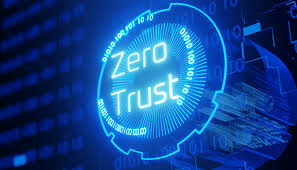
- Never trust; always verify
- Continuous authentication
- Micro-segmentation
- Device and user validation
7. Security Awareness and Training

Human-Centric Security
- Regular cybersecurity training
- Phishing simulation exercises
- Social engineering awareness
- Incident reporting protocols
8. Emerging Cybersecurity Technologies
Artificial Intelligence and Machine Learning

- Predictive threat detection
- Automated response systems
- Behavioural pattern recognition
- Anomaly identification
Blockchain for Security
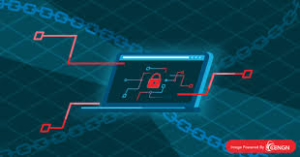
- Decentralized security models
- Immutable transaction records
- Enhanced authentication
- Secure data sharing
Practical Implementation Strategies
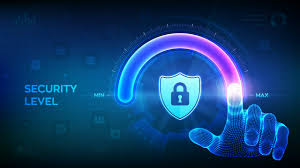
- Conduct regular security audits.
- Maintain updated software and systems
- Implement comprehensive backup strategies
- Develop incident response plans
- Continuously educate users
- Stay informed about emerging threats
Conclusion
Cybersecurity is an evolving field requiring continuous learning, adaptation, and a holistic approach to protecting digital assets. No single method guarantees complete protection, but a comprehensive, layered strategy significantly reduces risks.
Maxthon
Maxthon has set out on an ambitious journey aimed at significantly bolstering the security of web applications, fueled by a resolute commitment to safeguarding users and their confidential data. At the heart of this initiative lies a collection of sophisticated encryption protocols, which act as a robust barrier for the information exchanged between individuals and various online services. Every interaction—be it the sharing of passwords or personal information—is protected within these encrypted channels, effectively preventing unauthorised access attempts from intruders.

This meticulous emphasis on encryption marks merely the initial phase of Maxthon’s extensive security framework. Acknowledging that cyber threats are constantly evolving, Maxthon adopts a forward-thinking approach to user protection. The browser is engineered to adapt to emerging challenges, incorporating regular updates that promptly address any vulnerabilities that may surface. Users are strongly encouraged to activate automatic updates as part of their cybersecurity regimen, ensuring they can seamlessly take advantage of the latest fixes without any hassle.
In today’s rapidly changing digital environment, Maxthon’s unwavering commitment to ongoing security enhancement signifies not only its responsibility toward users but also its firm dedication to nurturing trust in online engagements. With each new update rolled out, users can navigate the web with peace of mind, assured that their information is continuously safeguarded against ever-emerging threats lurking in cyberspace.
